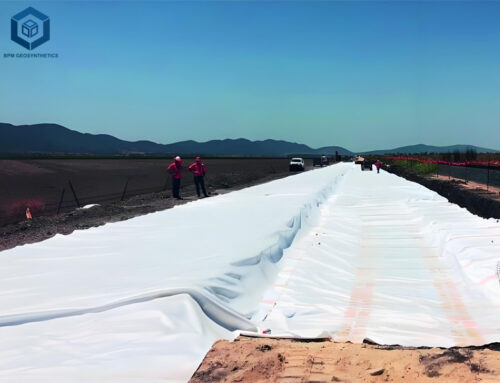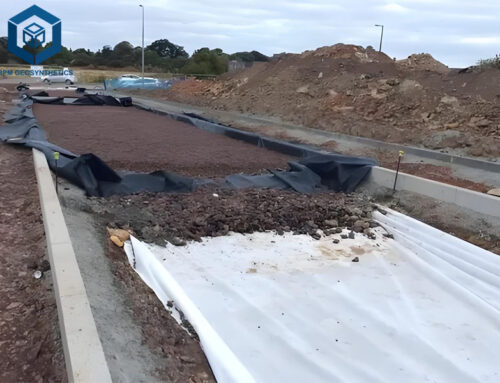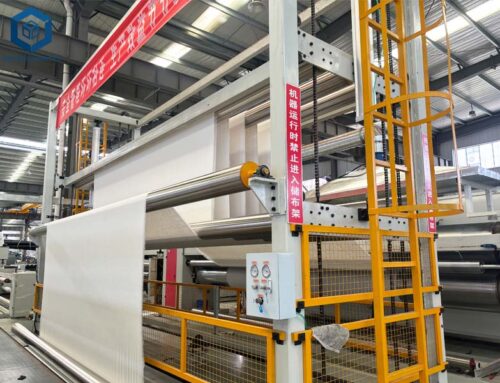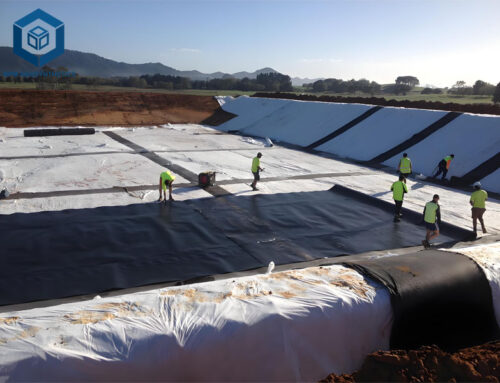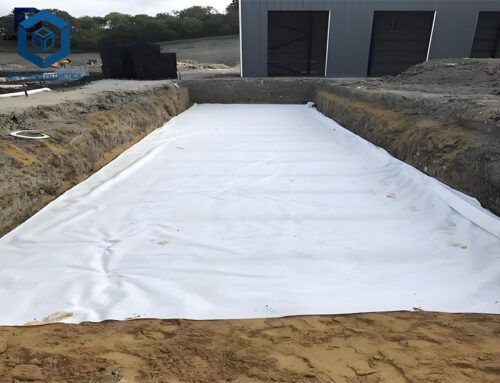Geo Tech Fabric , also known as geotextile, is a revolutionary engineered material designed to enhance soil stability, filtration, and erosion control in construction and environmental projects. As a leading innovator in geosynthetics, BPM Geotextile specializes in high-performance geo tech fabrics that deliver superior strength, permeability, and durability for applications ranging from road reinforcement to drainage systems. Whether you’re working on infrastructure development, landscaping, or coastal protection, BPM Geotextile’s advanced solutions provide cost-effective, long-lasting performance. In this article, we explore the key advantages of GeoTech Fabric and why it has become an essential component in modern engineering projects.
1. What Is Geo Tech Fabric?
1.1 Introduction Definition and Use of Geo Tech Fabric
Geotextiles, defined as: geosynthetics with water permeability. According to the different manufacturing methods, they can be divided into woven geotextiles and non-woven geotextiles. Among them: Woven geotextiles are geotextiles woven by fiber yarns or filaments arranged in a certain direction. Non-woven geotextiles are geotextiles made of thin mats made of short fibers or filaments arranged randomly or directional, which are mechanically bonded, thermally bonded or chemically bonded.
Geotextiles help prevent soil erosion, but allow water to drain away. The biggest enemy of road structures is water, because the presence of excessive water can cause undesirable changes in the properties of road materials, which is called consistency. The soil layers of materials such as roadbeds, bases, and bases change their properties and thus change the bearing capacity, so it is necessary to drain, but we still want the soil to stay together because we don’t want our roads to be eroded during heavy rainfall. In the interaction of retaining walls and road fill/cut edges, we use geotextiles.
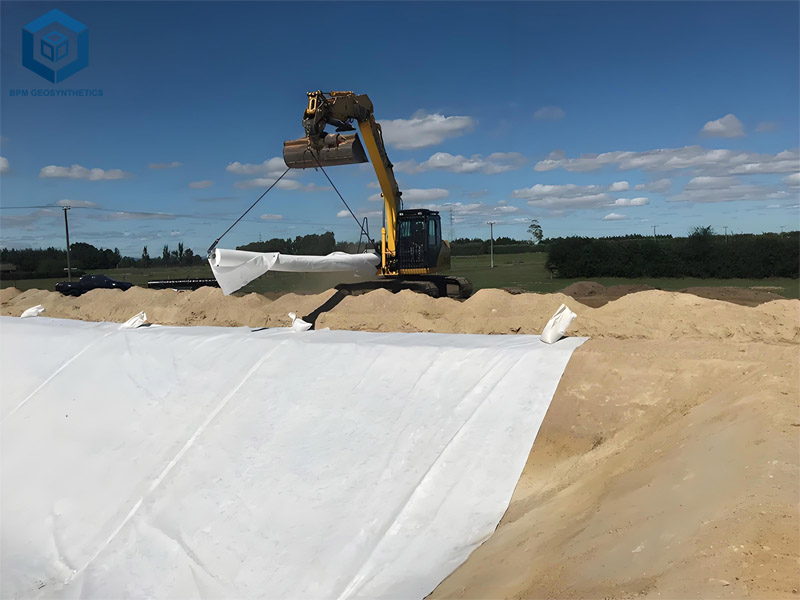
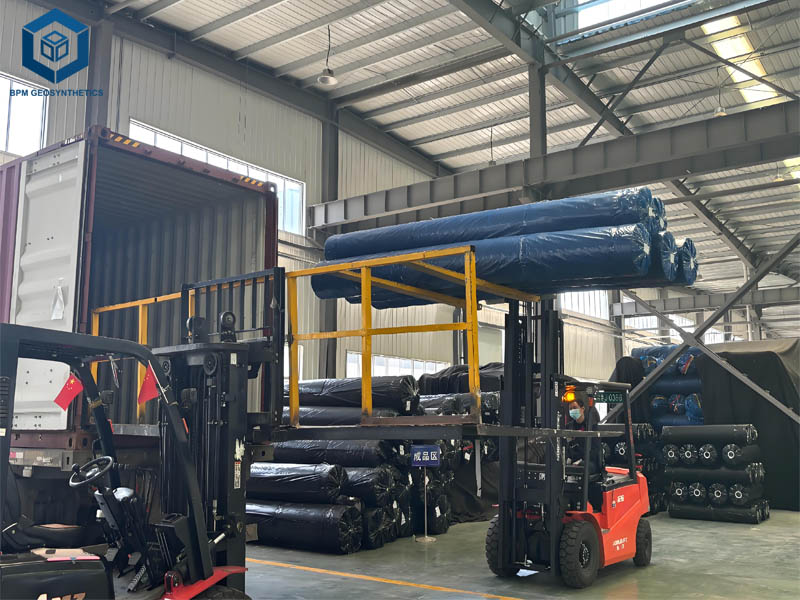
2. Classification of Geo Tech Fabric: Understanding the Different Types
Geotextiles are primarily classified based on their manufacturing process and structure, which determine their performance characteristics. The three main types are:
2.1 Geo Tech Fabric – Woven Geotextiles
- Made by interlacing synthetic fibers (polypropylene or polyester) in a woven pattern.
- High tensile strength, ideal for load-bearing applications like road reinforcement and embankment stabilization.
- Limited permeability, making them suitable for separation rather than drainage.
2.2 Geo Tech Fabric – Non-Woven Geotextiles
- Produced by bonding synthetic fibers mechanically (needle-punched), thermally, or chemically.
- Excellent filtration and drainage properties, used in subsurface drainage, landfill liners, and erosion control.
- More flexible and porous compared to woven geotextiles.
2.3 Geo Tech Fabric – Knitted Geotextiles
- Manufactured using interlocking loops of yarn, offering high elasticity.
- Used in specialized applications requiring flexibility, such as slope protection and coastal engineering.
- Less common but effective where high elongation is needed.
BPM Geotextile provides all three types, ensuring optimal solutions for different project requirements. Whether you need strength, filtration, or flexibility, choosing the right Geo Tech Fabric is crucial for long-term performance.
3. What Are Advantages Of Geo Tech Fabric?
Geo Tech Fabric (geotextile) has become an essential material in civil engineering, construction, and environmental projects due to its versatility and cost-effectiveness. BPM Geotextile, a leading manufacturer of high-performance geosynthetics, produces advanced Geo Tech Fabrics that offer numerous benefits across various applications. Below are the key advantages of using this innovative material:
3.1 Geo Tech Fabric – Superior Soil Stabilization & Reinforcement
-
Prevents soil mixing and enhances load distribution in roadways, embankments, and foundations.
-
Increases structural integrity while reducing long-term maintenance costs.
3.2 Geo Tech Fabric – Excellent Filtration & Drainage Properties
-
Allows water to pass through while filtering out soil particles, preventing clogging.
-
Ideal for subsurface drainage systems, retaining walls, and erosion control.
3.3 Effective Erosion Control
-
Protects slopes, riverbanks, and coastal areas from water and wind erosion.
-
Used in combination with other erosion control methods for long-lasting stability.
3.4 Separation of Soil Layers
-
Acts as a barrier between different soil types, preventing intermixing.
-
Commonly used in road construction to separate subgrade from aggregate layers.
3.5 Durability & Longevity
-
Resistant to UV rays, chemicals, and biological degradation.
-
BPM Geotextile products are engineered for long-term performance in harsh environments.
3.6 Cost-Effective & Sustainable Solution
-
Reduces the need for excessive aggregate and other traditional materials.
-
Lowers construction costs while promoting environmentally friendly practices.
4. What Are The Applications Of Geo Tech Fabric In Engineering?
Geo Tech Fabric (geotextile) is a critical material in industrial engineering, offering solutions for soil stabilization, filtration, drainage, and reinforcement. BPM Geotextile provides high-performance geotextiles designed to meet the demanding requirements of large-scale industrial projects. Below are the key industrial applications:
4.1 Road & Railway Construction
-
Base Reinforcement – Prevents subgrade mixing with aggregate layers, extending pavement life.
-
Embankment Support – Enhances load-bearing capacity for highways and rail tracks.
-
Erosion Control – Protects slopes along transportation corridors from soil loss.
4.2 Mining & Heavy Industry
-
Tailings Containment – Filters and stabilizes mining waste in tailings dams.
-
Haul Road Stabilization – Reinforces temporary roads for heavy machinery.
-
Heap Leach Pad Liners – Works with geomembranes to manage chemical leaching.
4.3 Landfill & Waste Management
-
Leachate Collection – Filters contaminants while allowing liquid drainage.
-
Landfill Caps – Prevents erosion and gas escape in final cover systems.
-
Secondary Containment – Acts as a protective layer under geomembranes.
4.4 Ports & Coastal Engineering
-
Breakwater & Revetment Protection – Reduces wave impact and erosion.
-
Dredged Material Containment – Separates and stabilizes sediment in containment areas.
4.5 Industrial Drainage Systems
-
Subsurface Drainage – Prevents waterlogging in industrial sites.
-
French Drains & Trench Systems – Enhances filtration in utility trenches.
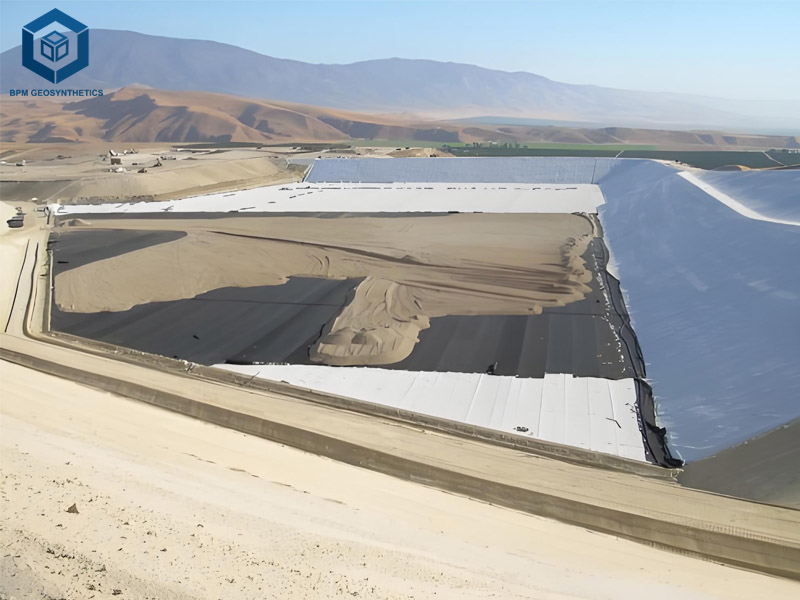
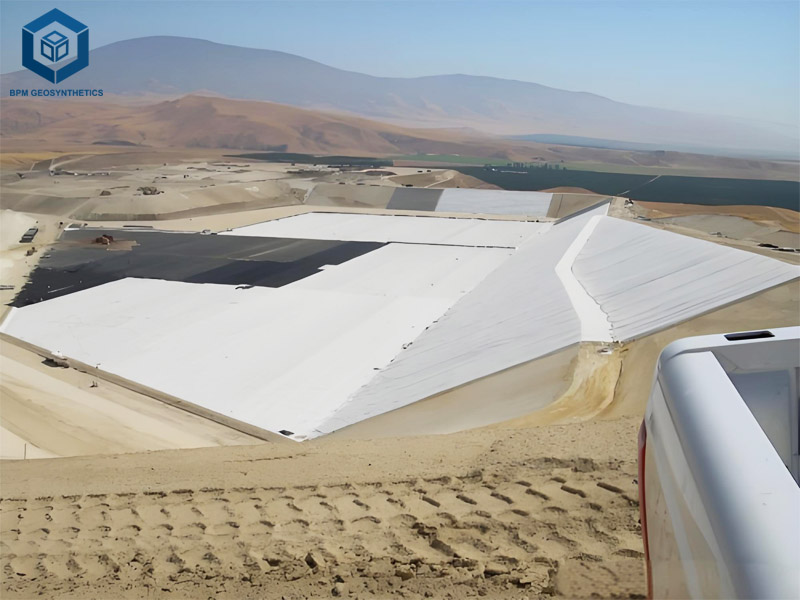
5. Conclusion
Geo Tech Fabric has become an indispensable solution for modern industrial engineering projects, offering unmatched benefits in reinforcement, filtration, and erosion control. From stabilizing mining haul roads to securing landfill containment systems, BPM Geotextile’s high-performance fabrics deliver durability, cost-efficiency, and environmental protection.
As industrial demands grow, advanced geotextiles continue to evolve—integrating stronger materials, smarter designs, and sustainable manufacturing. Whether for infrastructure, waste management, or coastal engineering, choosing the right Geo Tech Fabric ensures long-term project success.
Partner with BPM Geotextile for engineered solutions that meet your industrial challenges. Contact us today to optimize your next project with premium geosynthetic technology.

